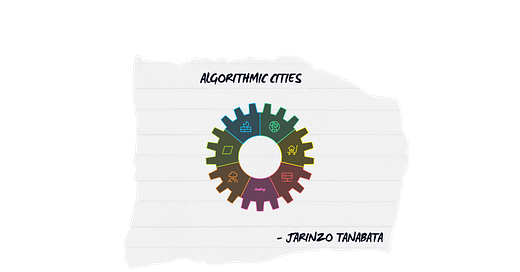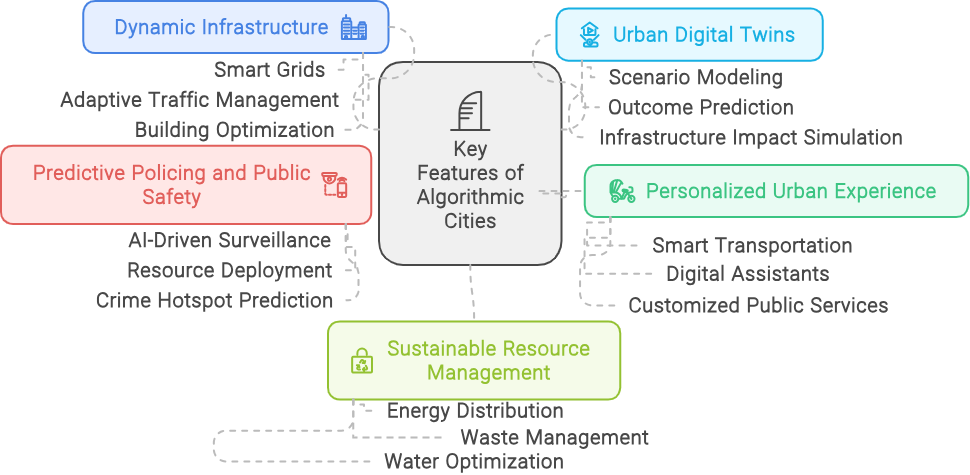Mental Notes 03 - Algorithmic Cites
Leveraging advanced algorithms, artificial intelligence, and data-driven methodologies, these cities aim to optimize urban living by responding dynamically to the needs of their inhabitants.
Introduction
Algorithmic cities represent a paradigm shift in how urban environments are conceptualized, designed, and managed. Leveraging advanced algorithms, artificial intelligence, and data-driven methodologies, these cities aim to optimize urban living by responding dynamically to the needs of their inhabitants. The core idea behind algorithmic cities is to utilize computational models to simulate and manage complex urban systems in real time, thereby enhancing efficiency, sustainability, and resilience. This approach has profound implications for urban planning, governance, resource allocation, and societal well-being.
The concept of algorithmic cities is grounded in the interdisciplinary convergence of several fields: smart city technology, computational urbanism, complex systems theory, and data science. The framework is built upon three foundational pillars:
Data-Driven Urbanism: The use of big data analytics, collected through a myriad of sensors, IoT devices, social media, and digital infrastructure, to gain insights into urban dynamics. This data informs decision-making processes across transportation, energy, waste management, healthcare, and social services.
Algorithmic Governance: The deployment of algorithms and AI models to make real-time decisions about city management. Examples include traffic optimization algorithms that dynamically adjust traffic lights and reroute vehicles to reduce congestion, or resource allocation algorithms that optimize energy use across a smart grid.
Feedback Loops and Adaptive Systems: Urban systems are designed to be adaptive and self-regulating through continuous feedback loops. For instance, environmental sensors detect pollution levels and trigger citywide adjustments, such as activating air purification systems or restricting vehicular access to certain areas.
Dynamic Infrastructure: Algorithmic cities utilize dynamic infrastructure that adapts to changing conditions. Roads, buildings, and public spaces are embedded with sensors and actuators, creating a responsive environment that can adjust its configuration based on real-time data. Examples include smart grids that distribute electricity more efficiently, buildings that optimize heating and cooling based on occupancy, and adaptive traffic management systems that reduce congestion.







